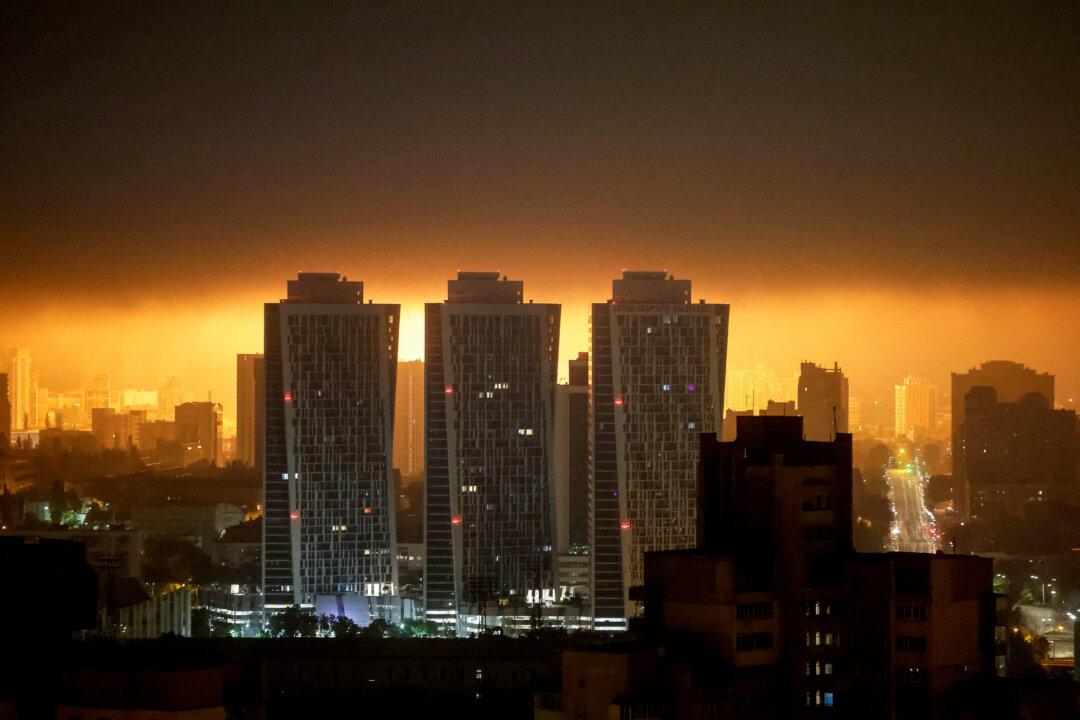Earlier in May, Russian and Iranian engineers began survey work for the planned construction of a railway line linking the Iranian cities of Rasht and Astara along the southwestern coast of the Caspian Sea.
According to Russia’s transport ministry, the project will involve the construction of eight train stations, dozens of bridges, and 100 miles of railway track.
Once completed, the Rasht–Astara railway line will connect Central Russia, via Azerbaijan, to Iranian ports on the Indian Ocean.
“It will create an uninterrupted rail link between Russia’s railway system and the Persian Gulf,” said Stanislav Pritchin, head of the Central Asia desk at Moscow’s Institute of World Economy and International Relations.
Missing Link
The Rasht–Astara line will be the final link of the International North–South Transport Corridor (INSTC), a multimodal transit route that has been in the making for 25 years.Pritchin described the Rasht–Astara line, which he said would take two to three years to complete, as a “crucial part” of the corridor’s burgeoning international rail network.
“Russia and Azerbaijan have finished their respective sections of the north–south corridor,” he said. “Now, we are waiting for Iran to complete the final link.”
Although the final rail link has yet to be built, the north–south corridor as a whole is already handling significant volumes of cargo traffic. According to Russia’s transport ministry, total trade volumes along the corridor reached 20 million tons in 2024.
“After the [Rasht–Astara railway] project is implemented, the capacity of the [corridor’s] western route alone will be at least 15 million tons of cargo per year,” the ministry said on its Telegram channel.
This figure is expected to rise even further once Iran’s Rasht–Astara rail line becomes operational, the ADY said in a January report.

Geography ‘Key Factor’
Still a work in progress, the north–south corridor is more than just a railway network. Rather, it is a multimodal transit corridor comprising road, rail, and maritime links.Roughly 4,500 miles in length, the project aims to increase trade connectivity between major population centers, including St. Petersburg and Moscow in Russia, Baku in Azerbaijan, Tehran and Bandar Abbas in Iran, and Mumbai in India.
By traversing Russia, Azerbaijan, and Iran, the north–south corridor represents the shortest route between Europe and India.
“That’s its main advantage,” Pritchin said.
Mamuka Tsereteli, senior fellow at the Central Asia–Caucasus Institute at the American Foreign Policy Council, also said that geography was the “key factor” at play.
“The shortest way from India to Northern Europe is via Greater Central Asia, Russia, and Baltic Sea ports,” Tsereteli told The Epoch Times.
“The other benefit is that this route has the potential to become an economic corridor by integrating elements of logistical hubs and redistribution centers, serving markets along the route.”
The International North–South Transport Corridor was established through a 2000 agreement among Russia, India, and Iran. It gained momentum with the 2011 Ashgabat Agreement, which sought to develop regional trade routes—including the corridor—between signatory states.

The north–south corridor currently consists of three main branches: a western branch through Azerbaijan, an eastern branch through Kazakhstan and Turkmenistan, and a central maritime branch that traverses the Caspian Sea.
After crossing Kazakhstan and Turkmenistan, they arrived at the Iranian port of Bandar Abbas, where the cargo was off-loaded and shipped across the Arabian Sea to India’s trade capital and major western port of Mumbai.
At the time, Kazakhstan’s transport ministry said the upgrades would increase trade volumes on the corridor’s eastern branch to 20 million tons by 2030.
Rivaling the Suez
Since its inception, the north–south corridor has been touted as a potential alternative to the traditional trade route through the Red Sea and Egypt’s Suez Canal.However, according to Pritchin, the corridor will not pose a serious challenge to the maritime route until Iran’s Rasht–Astara railway line becomes operational.
“Cargo is already being transported through Iran,” Pritchin said. “But without this final link in the rail network, the [corridor] will remain too expensive—and too inconvenient—to compete with the Suez Canal.”
Tsereteli said the north–south corridor would face difficulties in competing with the maritime routes—even in the long term—because of both higher costs and geopolitical considerations.
“Even if shippers have to take a longer route around the Horn of Africa due to the security situation in the Red Sea, it will still be less costly to deliver cargos to most European markets by sea,” he said.

What’s more, he said, interregional trade via the corridor will face a host of restrictions due to ongoing Western sanctions on both Russia and Iran.
“If there were no geopolitical constraints, free and open connectivity between the Indian subcontinent and Gulf countries and Europe—via Iran, the Caspian region, and Russia—would be a preferred option for producers and traders,” Tsereteli said.
“But sanctions exist and geopolitical realities limit the potential of the INSTC.
“At the same time, the INSTC will face major competition from the India–Middle East–Europe Economic Corridor, which has growing European support and fewer geopolitical challenges.”
That ship-to-rail transit network connects Mumbai and Europe through the United Arab Emirates, Saudi Arabia, Jordan, and Israel.
Nevertheless, Moscow appears to be moving full steam ahead on the ambitious project.
“Given the potential of developing trade with [African] countries, we see prospects for the further ... extension,” RZD deputy head Sergey Pavlov told Russia’s Interfax news agency on May 22.







